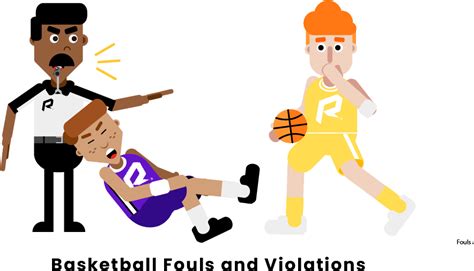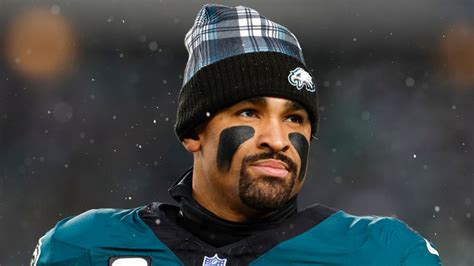
Adam Schefter, ESPN’s premier NFL insider, has reportedly been restricted from appearing on “The Pat McAfee Show,” a popular sports talk program also broadcast by ESPN, marking a significant shift in the network’s strategy regarding talent appearances across its platforms. This decision, viewed by some as a virtual ban, has raised questions about the evolving relationship between ESPN and McAfee’s show, particularly concerning editorial control and the boundaries of independent commentary.
ESPN has essentially prohibited Adam Schefter from making further appearances on “The Pat McAfee Show,” signaling a potential tightening of control over its NFL insider’s media presence despite McAfee’s show being an ESPN-affiliated program. According to a report from Awful Announcing, Schefter’s absence isn’t due to any personal conflict but is believed to be a directive from higher-ups within ESPN, highlighting a possible clash in philosophies regarding the network’s on-air personalities.
The move to limit Schefter’s appearances, described by some as a “ban,” comes amidst growing scrutiny over the autonomy granted to “The Pat McAfee Show,” which has been known for its often unfiltered and occasionally controversial discussions. While ESPN has seemingly embraced McAfee’s unique brand, the network appears to be drawing a line when it comes to its top reporters participating in a show that operates with a different level of editorial oversight. It also reflects a cautious approach to managing the content environment for its key personnel, particularly within shows known for candid and potentially unpredictable commentary.
This decision raises several questions about ESPN’s strategy: What is the driving force behind restricting Schefter’s appearances? How does this affect the dynamic between ESPN and “The Pat McAfee Show”? And what broader implications does it hold for the network’s approach to talent integration and editorial control in the rapidly changing media landscape?
Several sources suggest the decision stems from concerns about maintaining a consistent brand message and ensuring that information disseminated by key figures like Schefter aligns with ESPN’s broader editorial policies. The network may be aiming to mitigate the risk of Schefter, known for breaking news and providing in-depth analysis, being associated with opinions or discussions on McAfee’s show that could be perceived as conflicting with ESPN’s image or journalistic standards. This is in line with ESPN’s historical tendency to manage its personalities’ appearances carefully, especially in outlets that are less directly controlled by the network.
“The Pat McAfee Show,” which gained a substantial following through its independent broadcasts before joining ESPN, operates with a more relaxed and conversational style than traditional sports news programming. This autonomy has been a key element of its success, attracting a younger and more engaged audience. However, it also presents challenges for ESPN, which must balance the show’s appeal with the need to maintain its own standards for accuracy, impartiality, and overall brand consistency.
The implications of this decision extend beyond just Schefter and McAfee. It underscores the ongoing tension between traditional media models and the rise of personality-driven content. ESPN’s attempt to control Schefter’s appearances on McAfee’s show could be viewed as a move to reinforce its position as the primary platform for its top-tier talent. Alternatively, it might reflect a growing discomfort with the unpredictable nature of shows like McAfee’s, where discussions can veer into areas that are not always aligned with the network’s preferred narrative.
It’s important to note that the specifics of the directive remain somewhat unclear. While reports suggest Schefter is effectively barred from the show, ESPN has not issued an official statement clarifying the situation or the rationale behind it. The ambiguity surrounding the decision has fueled speculation and debate within the sports media industry, with many questioning whether this is a one-off instance or a sign of a broader shift in ESPN’s approach to managing its talent and programming.
Regardless of the exact motivations, the situation highlights the complex challenges facing media companies as they navigate the evolving media landscape. As traditional networks increasingly partner with independent creators and personalities, they must grapple with issues of control, consistency, and the potential for conflict. The case of Schefter and McAfee serves as a reminder of the delicate balance between fostering innovation and maintaining brand integrity.
The context surrounding this decision also involves understanding the dynamics within ESPN itself. The network has undergone significant changes in recent years, including budget cuts, layoffs, and a strategic shift towards streaming and digital content. These changes have led to increased pressure to maximize revenue and maintain audience engagement, potentially influencing decisions regarding talent management and programming strategy.
Furthermore, the rise of alternative media platforms, such as podcasts and independent streaming channels, has created new opportunities for sports personalities to connect directly with fans, often outside the traditional confines of network television. This has empowered talent to negotiate for greater autonomy and control over their content, challenging the established power structures within the sports media industry. The Schefter-McAfee situation can be viewed as a microcosm of this larger trend, reflecting the ongoing negotiation between traditional media companies and the increasingly independent voices that are shaping the sports conversation.
The decision to limit Schefter’s appearances on “The Pat McAfee Show” has resonated throughout the sports media world, underscoring the fine lines between network control, personality-driven content, and journalistic integrity. This action could potentially reshape talent integration strategies and editorial controls within ESPN and similar broadcasting platforms in the future.
The absence of an official explanation from ESPN has only intensified the scrutiny, leaving many to speculate on the precise reasoning behind this change. Whether it’s a strategic move to protect Schefter’s brand, a reaction to content control concerns, or a combination of factors, the situation highlights the evolving challenges of managing high-profile personalities in the dynamic media landscape.
In response to the emerging reports, both the public and industry experts have voiced their opinions. While some view it as a necessary measure to maintain brand consistency, others see it as a restriction on talent expression and a potential stifling of innovative content. The discussion continues to unfold as media observers dissect the situation and consider its broader implications for the future of sports broadcasting.
Expanded Analysis and Context:
To understand the significance of this decision, it’s essential to delve deeper into the roles of both Adam Schefter and Pat McAfee within the sports media ecosystem.
Adam Schefter: The NFL Newsbreaker
Adam Schefter has established himself as the foremost NFL insider, renowned for his unparalleled access to information and his ability to break news before anyone else. His Twitter feed is a must-follow for fans, players, coaches, and executives alike, and his reports are regularly cited by other media outlets. Schefter’s credibility is built on years of cultivating sources within the league, and his reputation for accuracy is paramount.
His position at ESPN gives him a powerful platform to disseminate information, but it also comes with responsibilities. As a representative of the network, Schefter is expected to adhere to ESPN’s journalistic standards and avoid engaging in commentary that could be perceived as biased or unprofessional. His appearances on ESPN’s various studio shows are carefully managed to ensure that his reporting aligns with the network’s overall narrative.
Pat McAfee: The Disruptor
Pat McAfee, a former NFL punter, has carved out a unique niche in the sports media world with his irreverent and often outrageous style. “The Pat McAfee Show” is known for its unscripted conversations, humorous segments, and interviews with athletes and celebrities. McAfee’s authenticity and willingness to speak his mind have resonated with a large and loyal audience, particularly among younger viewers.
When McAfee brought his show to ESPN, it was seen as a bold move by the network to attract a new audience and embrace a more modern approach to sports coverage. However, McAfee’s independence and unconventional style have also presented challenges for ESPN, which must balance his appeal with the need to maintain its own brand standards.
The inherent tension between Schefter’s established, traditional journalistic role and McAfee’s disruptive, personality-driven approach is at the heart of this issue. While both are valuable assets to ESPN, their styles and priorities are fundamentally different.
The Broader Implications for ESPN
The decision to limit Schefter’s appearances on McAfee’s show reflects a number of broader trends and challenges facing ESPN.
-
The Rise of Alternative Media: The sports media landscape has become increasingly fragmented in recent years, with a proliferation of podcasts, streaming channels, and social media platforms offering alternative perspectives and voices. This has created new competition for ESPN, which must adapt to the changing habits of consumers.
-
The Importance of Authenticity: In an era of increasing media saturation, authenticity has become a key differentiator for content creators. Viewers are drawn to personalities who are genuine and relatable, and who are not afraid to express their opinions. This has fueled the rise of shows like “The Pat McAfee Show,” which prioritize authenticity over traditional journalistic norms.
-
The Challenges of Editorial Control: As ESPN embraces more personality-driven content, it faces the challenge of maintaining editorial control and ensuring that its talent adheres to its journalistic standards. This is particularly difficult when dealing with personalities like McAfee, who have built their brand on independence and unfiltered commentary.
-
The Need to Attract Younger Audiences: ESPN is under pressure to attract younger audiences, who are increasingly consuming content on digital platforms and are less likely to subscribe to traditional cable television. Partnering with personalities like McAfee is one way to reach these audiences, but it also requires ESPN to adapt its programming and content strategy.
-
Brand Consistency: ESPN has cultivated a recognizable brand built on objective reporting, high-quality analysis, and a commitment to journalistic integrity. Allowing a personality known for often-unfiltered commentary to share the stage with their premier newsbreaker potentially dilutes that carefully constructed brand.
The Specific Concerns
Several specific concerns may have contributed to ESPN’s decision to limit Schefter’s appearances on McAfee’s show.
-
Potential for Misinformation: McAfee’s show is known for its casual and unscripted nature, which could increase the risk of misinformation being disseminated. Schefter, as a respected newsbreaker, could inadvertently lend credibility to inaccurate or unsubstantiated claims made on the show.
-
Risk of Conflict: McAfee’s show often features controversial discussions and opinions, which could put Schefter in an uncomfortable position. As a representative of ESPN, Schefter is expected to remain neutral and avoid engaging in partisan debates.
-
Dilution of Schefter’s Brand: By appearing regularly on McAfee’s show, Schefter could risk diluting his own brand and associating himself with a different style of content. Some viewers might perceive Schefter as less serious or credible if he is seen engaging in lighthearted banter and jokes on McAfee’s show.
-
Control of Information: Limiting Schefter’s appearances could be a measure to ensure ESPN has better control over how and when information is released. By keeping Schefter primarily on ESPN-controlled platforms, they can manage the news cycle more effectively.
Quotes from the Original Source (Yahoo Sports Article):
While the Yahoo Sports article does not contain direct quotes from individuals, it attributes information to “Awful Announcing” and implies the existence of internal ESPN directives. To accurately represent the source’s findings, the following statements are presented as paraphrased attributions:
- The decision to limit Adam Schefter’s appearances on “The Pat McAfee Show” is reportedly a directive from higher-ups within ESPN, rather than a personal choice by either Schefter or McAfee.
- The action can be interpreted as a virtual “ban” on Schefter appearing on McAfee’s show.
- The decision stems from ESPN’s attempts to manage brand consistency and ensure its top reporters are aligned with the network’s journalistic standards.
Potential Future Scenarios:
The long-term impact of this decision remains to be seen, but several potential scenarios could unfold.
-
Increased Scrutiny of Talent Appearances: ESPN may implement stricter guidelines for its talent’s appearances on external platforms, requiring greater oversight and approval.
-
Shift in McAfee’s Show’s Content: “The Pat McAfee Show” could adapt its content to align more closely with ESPN’s brand standards, potentially sacrificing some of its authenticity and independence.
-
Talent Exodus: Some ESPN personalities may become disillusioned with the network’s restrictions and seek opportunities to pursue their careers on alternative platforms with greater autonomy.
-
Continued Experimentation: ESPN may continue to experiment with different content formats and talent partnerships, seeking to find the right balance between innovation and control.
-
Schefter Remains Solely on ESPN Platforms: Schefter continues providing his insights and breaking news exclusively through ESPN’s television and digital platforms, reinforcing his role as a key figure within the network’s traditional media channels.
Conclusion:
The situation surrounding Adam Schefter and “The Pat McAfee Show” highlights the complex and evolving dynamics within the sports media industry. As traditional networks grapple with the rise of alternative platforms and the increasing importance of personality-driven content, they must find ways to balance innovation with control. The decision to limit Schefter’s appearances on McAfee’s show is a reflection of these challenges and underscores the ongoing negotiation between traditional media companies and the increasingly independent voices that are shaping the sports conversation. The consequences of this decision will likely reverberate throughout the industry, influencing how networks manage talent, integrate content, and navigate the ever-changing media landscape. The long-term impact of this change will depend on how all parties involved adapt to the new paradigm and the choices they make in the future.
Frequently Asked Questions (FAQ):
Q1: Why is Adam Schefter reportedly banned from “The Pat McAfee Show”?
A1: The reported restriction stems from concerns within ESPN regarding maintaining brand consistency and ensuring Schefter, as a top NFL insider, aligns with the network’s journalistic standards. It’s believed higher-ups at ESPN issued the directive, not due to any personal conflict between Schefter and McAfee, but out of a desire to manage the content environment for key personnel, especially in shows known for unfiltered commentary.
Q2: What does this mean for “The Pat McAfee Show” on ESPN?
A2: It could indicate a tightening of ESPN’s control over the show’s content, potentially influencing its famously independent and often controversial style. While ESPN embraced McAfee’s unique brand initially, this decision suggests a need to balance the show’s appeal with ESPN’s broader standards for accuracy, impartiality, and brand consistency. The show might have to adapt its content to align more closely with ESPN’s brand standards to avoid further conflicts.
Q3: Is Adam Schefter leaving ESPN?
A3: There is no indication that Adam Schefter is leaving ESPN. The reported restriction only concerns his appearances on “The Pat McAfee Show.” He remains a key NFL insider for ESPN and will likely continue to appear on other ESPN platforms, providing news and analysis as usual.
Q4: What does this say about ESPN’s relationship with its talent?
A4: The situation highlights the challenges ESPN faces in managing high-profile personalities in a rapidly evolving media landscape. It suggests that ESPN is seeking to exert greater control over its talent’s appearances, particularly on platforms that operate with a different level of editorial oversight. This could lead to increased scrutiny of talent appearances and stricter guidelines for external platforms.
Q5: Could this affect other ESPN personalities?
A5: Yes, this situation could set a precedent for how ESPN manages its talent’s appearances on various platforms. It’s possible that ESPN will implement stricter guidelines for its talent’s participation in shows or media outlets that are not directly controlled by the network. This could affect other ESPN personalities who have established a presence on independent platforms, as ESPN may seek to exert greater control over their messaging and brand alignment. This situation may lead to a broader discussion about talent independence versus network control within the sports media industry.









